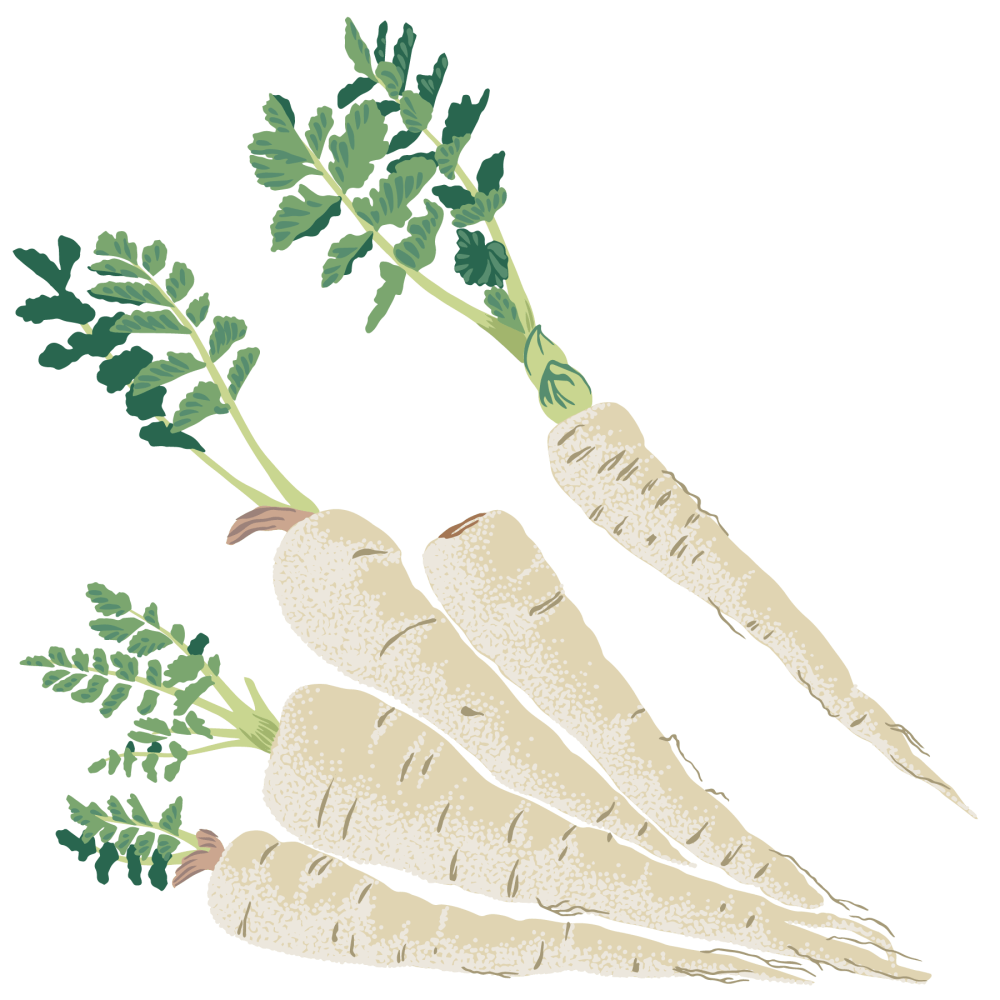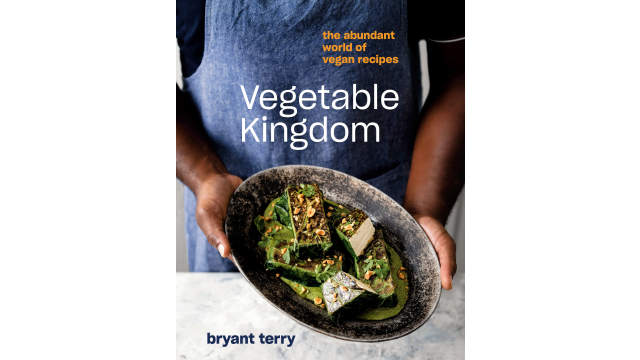Parsnip

Latin name: Pastinaca sativa
Other names: pastinak (Danish)
Uses: root vegetable
What are parsnips?
If you thought that a parsnip is just a giant white carrot, you’re pretty much right — they’re both in the same family, are both long taproots, and have very similar flavors. The parsnip is more than a carrot-cousin, though, and you’d be remiss to overlook its strengths, which are only revealed through patient cooking.
Why are parsnips healthy?
Parsnips are full of fiber, and a good source of vitamins (some Bs, C, and K) and minerals (iron, potassium, and magnesium). Potassium is vital for heart health and regulating blood pressure, and can protect against kidney stones.
What do parsnips taste like?
Parsnips have a carroty flavor thanks a similar combination of furanocoumarins and sugars, which impart an earthy (almost dirt-like), spicy-sweet-woody aroma. They’re also starchier and a little more fibrous than carrots. They can definitely get woody if they’re harvested too late or left in your veggie drawer too long.
How do I use parsnips?
Unlike carrots, parsnips really need to be cooked to be appreciated; their woodier texture makes them ill-suited to a crudités platter. In addition to the carroty flavors that make parsnips a natural match for butter and sweeteners (honey and maple syrup especially), parsnips contain the flavor compound myristicin, which is also found in nutmeg. Use this to your advantage by draping roasted parsnips in a blanket of nutmeg-y béchamel sauce for a silky gratin.
What do parsnips pair well with?
Speaking of gratins and creamy things, parsnips are a wonderful addition to any potato-based dish. Use them in chowders and bisques, mash them along with potatoes, or try your hand at parsnip gnocchi in a garlic-chive cream sauce. Because of their similarities to carrots, they also love being caramelized with honey or brown sugar, mustard, and fellow carrot family members fennel, anise, and/or cumin seeds. You can also peel parsnips into strips and fry them into chips to dunk in a creamy dip flecked with parsley and dill.
Where do parsnips grow?
Parsnips originated in the dry, scrubby limestone soils of Eurasia — wild parsnips still grow in dry grasslands with alkaline soils. Because they’re best suited to cool climates, today they’re predominantly grown in the Netherlands and Germany. To grow your own, sow the seeds in the warming mid-spring soils and let them grow all year long. They’ll be sweetest and most tender if harvested after a snow.
How to buy parsnips:
Look for firm roots that aren't soft, wrinkled, or beginning to brown.
Fun parsnip fact:
Despite their name, a parsnip is not a cross between parsley and turnip. Its name comes the Middle English “pasnepe,” derived from the Old French “pasnaie.” This came from the Latin “pastinum,” which can either refer to digging, or a type of two-pronged dibble (garden tool) that perhaps was used for harvesting parsnips back in the day.




